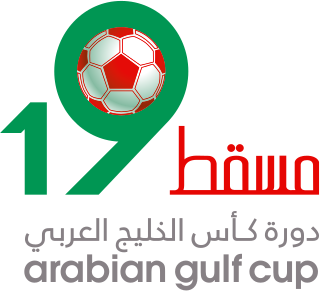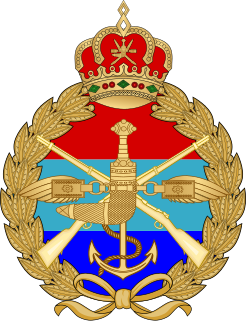
Oman, officially the Sultanate of Oman, is a country in Western Asia. It is situated on the southeastern coast of the Arabian Peninsula, and spans the mouth of the Persian Gulf. Oman shares land borders with Saudi Arabia, the United Arab Emirates, and Yemen; while sharing maritime borders with Iran and Pakistan. The coast is formed by the Arabian Sea on the southeast, and the Gulf of Oman on the northeast. The Madha and Musandam exclaves are surrounded by the United Arab Emirates on their land borders, with the Strait of Hormuz and the Gulf of Oman forming Musandam's coastal boundaries. Muscat is the nation's capital and largest city.

Oman is the site of pre-historic human habitation, stretching back over 100,000 years. The region was impacted by powerful invaders, including other Arab tribes, Portugal and Britain. Oman once possessed the island of Zanzibar, on the east coast of Africa as a colony. Oman also held Gwadar as a colony for many years.

Muscat is the capital and most populated city in Oman. It is the seat of the Governorate of Muscat. According to the National Centre for Statistics and Information (NCSI), the total population of Muscat Governorate was 1.4 million as of September 2018. The metropolitan area spans approximately 3,500 km2 (1,400 sq mi) and includes six provinces called wilayats. Known since the early 1st century AD as an important trading port between the west and the east, Muscat was ruled by various indigenous tribes as well as foreign powers such as the Persians, the Portuguese Empire, the Iberian Union and the Ottoman Empire at various points in its history. A regional military power in the 18th century, Muscat's influence extended as far as East Africa and Zanzibar. As an important port-town in the Gulf of Oman, Muscat attracted foreign tradesmen and settlers such as the Persians and the Balochis. Since the ascension of Qaboos bin Said as Sultan of Oman in 1970, Muscat has experienced rapid infrastructural development that has led to the growth of a vibrant economy and a multi-ethnic society. Muscat is termed as a Beta - Global City by the Globalization and World Cities Research Network.

Qaboos bin Said Al Said was the Sultan of Oman from 23 July 1970 until his death in 2020. A fifteenth-generation descendant of the founder of the House of Al Said, he was the longest-serving leader in the Middle East and Arab world at the time of his death.

Muttrah, administratively a wilayah (province), is located in the Muscat Governorate of Oman. Before the discovery of oil in Oman, Muttrah was the center of commerce in Oman (Muscat). It is still a center of commerce as one of the largest sea ports of the region is located there. Other landmarks include Souq Muttrah, a traditional bazaar and Sour Al-Lawatiah, a small community of houses surrounded by an old wall. To the south lies Muscat District.

Salalah is the capital and largest city of the southern Omani governorate of Dhofar. Its population in 2009 was about 197,169.

The Sultanate of Muscat and Oman, also known briefly as the State of Muscat and Oman during the rule of Timur ibn Faisal, was a sovereign state that encompassed the present-day Sultanate of Oman and parts of present-day United Arab Emirates and Pakistan, in the second half of the 19th century and 20th century. Ruled by the Busaid dynasty, it was established as a result of the partition of the Omani Empire upon the death of its last ruler Said ibn Sultan. The Sultanate transitioned into a new form of government after the palace coup of 23 July 1970 in which the sultan Said ibn Timur was immediately deposed in favor of his son Qaboos ibn Said.
The Education in Oman is provided free of charge up to the end of secondary education, though attendance is not mandatory at any level. In 1970 there were only three formal schools with 900 students in the whole country. Oman's national educational program expanded rapidly during the 1970s and the 1980s. In 2006–2007 about 560,000 students attended 1053 public schools. The number of students in private schools is about 65,000. There are also extensive programmes to combat adult illiteracy. Sultan Qaboos University, the only national university near Muscat, was founded in 1986, and in 2006 it had 13,500 students. The Human Development Report found the literacy rate to be 93.0% in adults, up from 54.7% in 1990. For the same period, the youth literacy rate increased from 85.6 to 97.3%. Public expenditure on education was reported to be 4.6% of GDP and 26.1% of total government spending.

The Al Alam Palace is a palace located in Old Muscat, Oman. It was used as a ceremonial palace by Sultan Qaboos bin Said Al Said.

The 19th Arabian Gulf Cup was the nineteenth edition of the biannual Gulf Cup competition, and took place in Muscat, Oman, from 4 to 17 January 2009 and was won by Oman for the first time in its history, in a penalty shootout against regional rivals, Saudi Arabia.

This page list topics related to Oman.
Omani Aquarium and Marine Science and Fisheries Centre is an aquacultural museum, located between the Al Bustan Palace Hotel and the Capital Yacht near Sidab Muscat in Muscat, Oman.
The Omani French Museum is a heritage museum located in the former residence of the French Consul, Bait Faransa on Lane 9310, Qasr Al Alam Street, in Old Muscat, Oman.

The Sultan's Armed Forces Museum is a military history museum, located in the 150-year-old Bait Al Falaj Fort, once the headquarters for Sultan Said bin Sultan's Armed Forces, located on Al Mujamma Street, in the Ruwi area near Muscat, Oman. It was graciously inaugurated in 1988 by His Majesty Sultan Qaboos, who was supreme commander of the Armed Forces until his death in 2020.

Sayyid Badr Albusaidi is the Foreign Minister of Oman. Sayyid Badr has represented Oman in regional and international meetings, which include the United Nations.

The Royal Oman Police (ROP), also known as Oman Police, is the main law and order agency for the Sultanate of Oman. It maintains a helicopter fleet and also carries on the duties of safeguarding the long Omani coastline.

Pakistan School Muscat (PSM) is a school in the Sultanate of Oman. It was founded in a rented flat in Muscat, as a result of a decision made in the first meeting of Pakistani Culture Centre. Efforts, spearheaded by the senior journalist and founding Chief Editor of Times of Oman Rana N. Parveze along with Mr. and Mrs. S. M. Shafi, were made to collect funds and as a result the school was shifted to its campus in January 1981. His Majesty Sultan Qaboos granted land in Darsait that enabled the school to be established.
The following is a timeline of the history of the city of Muscat, Oman.

Old Muscat is the original historic city of Muscat, the capital of Oman, on the coast in the Gulf of Oman.















